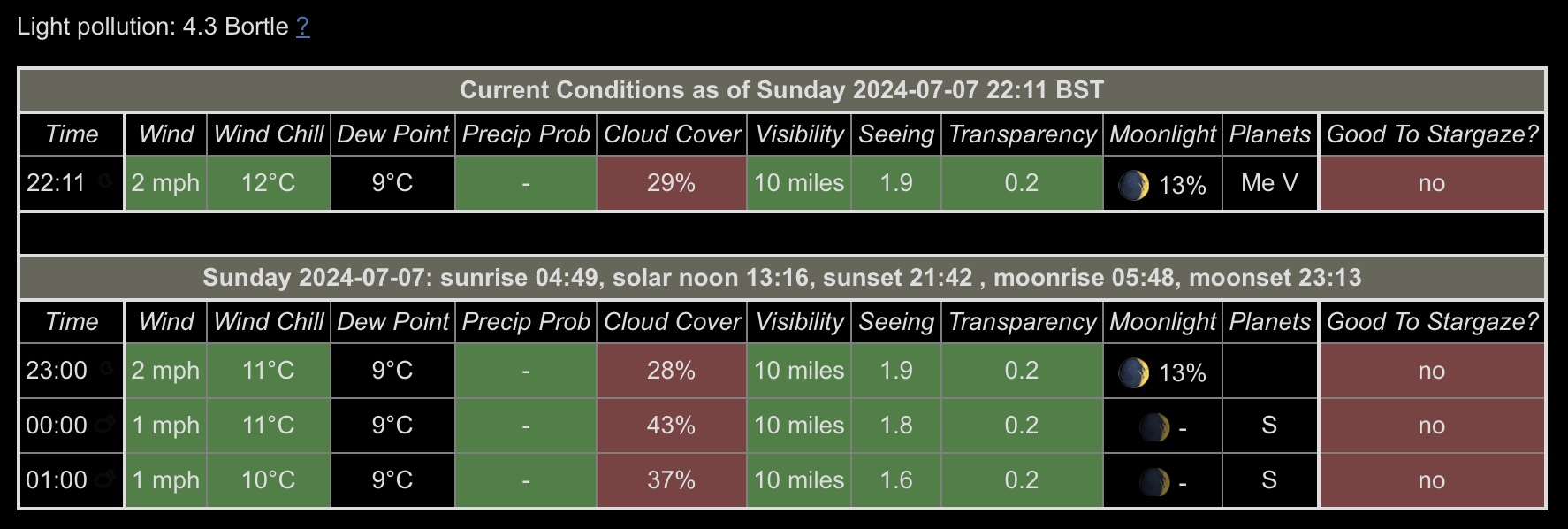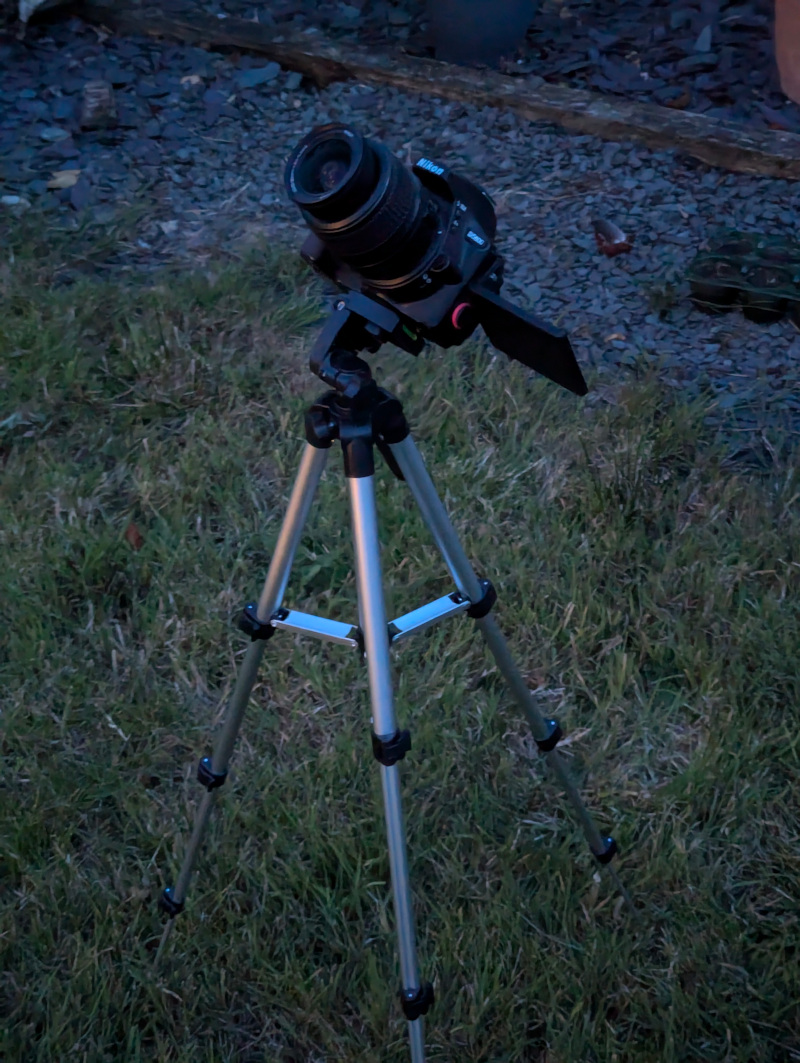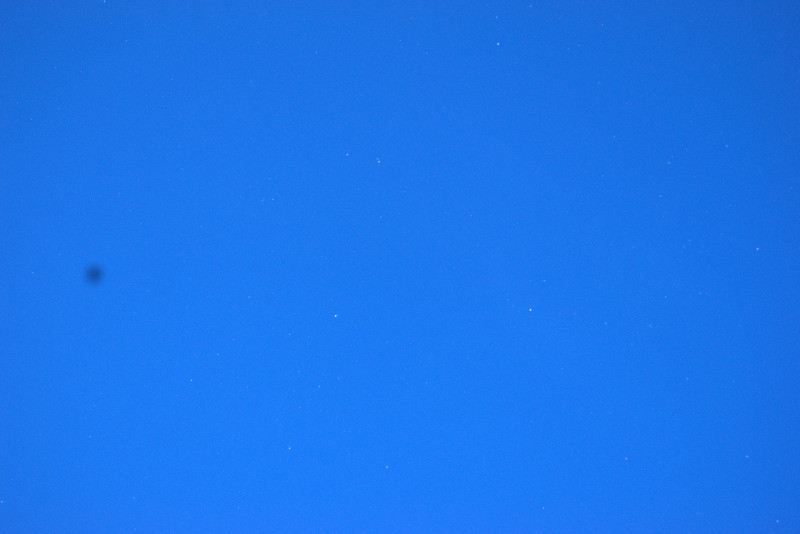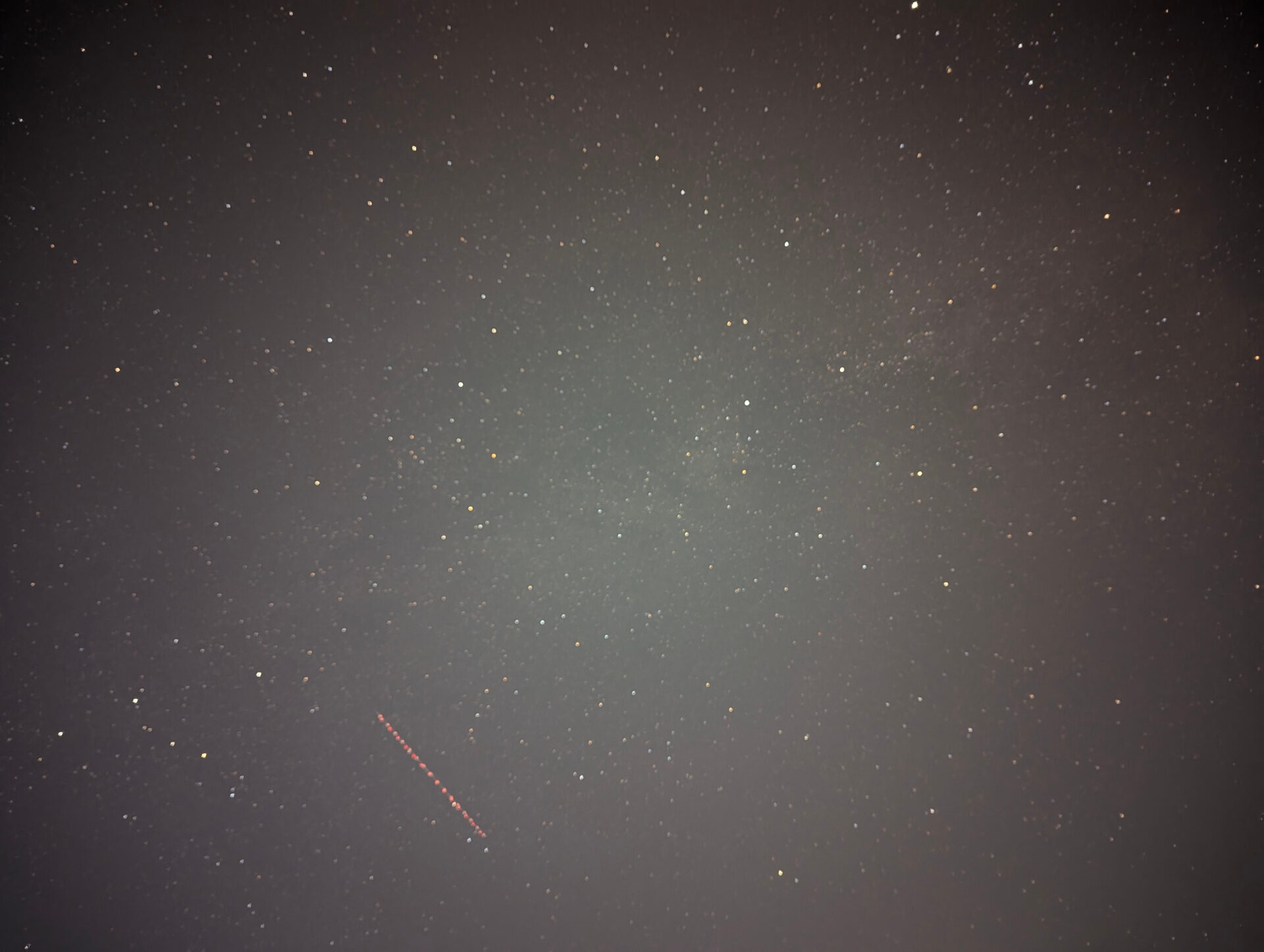This log relates to the following Observation Report: NGC 7000, My First Picture of a Nebula.
This is also referenced in: NGC 7000: My Progress in 1 Month.
18:00 – The sky looks pretty clear so I checked the cloud coverage forecast and it looks like it should be perfectly clear between 22:00 and 01:00.
21:30 – Went out to check the cloud coverage. While it was still light, I tidied the area of the garden where I’ll be setting up my camera.
22:00 – Cloud coverage forecasts have taken a sour turn. Accuweather doesn’t fill me with confidence. I’ve checked goodtostargaze.com, and they show that the cloud coverage % overall should be about the same until midnight when it’ll get slightly worse. I’m just debating now if I want to try my luck or not.
22:30 – I’ve configured all of my camera settings. The sky is perfectly clear above me, but I can see some scary-looking clouds in the distance. I’m definitely going to have a run-in with them, but I’m hoping to get some good shots in first. I’ve decided I’ll go ahead with attempting the pictures. Worst case scenario, I get a bit more practice doing all this setting up.
22:45 – I’ve set up in the garden. I took some time to manually focus the camera. I used the method of digitally zooming in on the brightest star, and then adjusting the focus ring to make the dot as small as possible. Tonight’s target is Deneb, where I’m hoping I can also see the North American Nebula. This is my third attempt at this target in a little under 2 months. I’ll admit, it’s currently winning.
22:50 – It’s still pretty bright out in all honesty. But with the scary clouds being out and about, I decided to go ahead and start taking pictures. One mistake I made last time was that my exposures were too long, leaving star trails in the images. To counter that, I did the math this time: 500/55=9.09 (500/focal length=exposure time). As a result, I’m doing exposures of 8 seconds tonight.
23:10 – Hit an immediate disaster. This camera has had a couple of instances lately where oil is getting flicked onto the sensor when the mirror is retracting. It’s done this almost immediately as I’ve started taking pictures. I sprung into action to retrieve my cleaning solution and soft cloths (purchased because of this very issue), took the camera off the tripod, and took the lens off so I could start cleaning everything. Everything’s back together now, but I’m a bit worried it’s going to happen again. I’ve re-focused the camera once more, and I’m back to taking pictures. The aim of the game tonight is just to get whatever I can, even though it does feel like the world is against me tonight…
23:30 – I’ve been steadily taking photos since the last update. I’m going to keep going until I get buried under the clouds, or we hit 00:30. Frustratingly, while I was checking every 5 minutes, it’s now too dark for me to able to see the oil spots on any photos. If the camera did flick oil onto the sensor again, I won’t have any way to know now until I inspect the pictures tomorrow.
23:40 – So I didn’t tighten my mount sufficiently. Over the last 30 minutes, each picture was aimed slightly higher and higher with each frame. I’d say this evening felt a little cursed, but this one’s definitely on me. On the bright side, there are no clouds yet. I’ve recentered the frame and tightened my cheap mount as much as possible. The show must go on.
00:00 – You can’t make this stuff up, honestly. I did a quick check-in and apparently, at some stage in all my faffing, I’d accidentally notched my exposure time up to 10 seconds instead of 8 seconds. According to the formula from earlier, 10 seconds is too long when shooting static at this focal length. I did a quick check on the camera screen and I do think there’ll be a slight issue from this. Not quite full trails, but certainly a slight blur. Thankfully, it’s minor, and I noticed. If the 10-second exposures are the majority of my captures, then they’ll stay. I’ll have to experiment to see if it’s better to leave them out. For now, I’ve set it back to 8 seconds and I’m carrying on. These things happen in 3s, right?
00:02 – I’ve decided to do a positive update for a change of pace: There are still no clouds. If all else fails, at least my excuse is gone… Maybe that wasn’t so positive.
00:15 – I’m getting ready to wrap up now. I’m going to take pictures for another 5 minutes, then I’m going to take my camera off the tripod to take my dark frames and biases. While I’m doing that, I’m going to do an experiment. My phone (Google Pixel Pro 7) boasts an astrophotography mode where you can take up to a 5-minute picture. I’m pretty certain it adds some AI nonsense in there too, but I’m curious to see how that compares to my DSLR setup. I’m going to make sure to do a stacked image using the same total exposure time for a decent comparison in detail. That might also make for a fun blog post, should the results be interesting.
00:28 – I’m now inside. It’s been a bit of a tricky session tonight. My main takeaways here are:
- Don’t buy a camera that is prone to flicking oil on its own sensor?
- Tighten up that mount, especially if it’s not reliable.
- Always double-check the settings after any adjustments.
- This is a new one from after I put the camera away: Buy a dew heater for my lens.
I’m interested to see what the final product to come out of this is. For now, though, it’s time for some sleep.




0 Comments